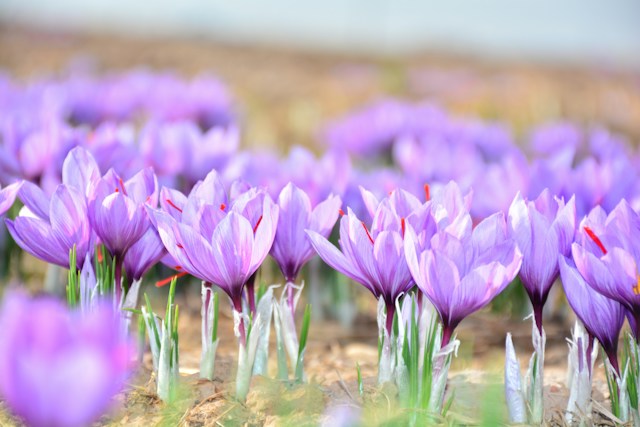
Many people know saffron as one of the most expensive spices in the world – but few know why. Saffron has many uses, including its use as a flavorful spice in Moroccan, Indian, and Iranian cuisines. Some people also use this precious spice for its health benefits, such as its cancer-fighting properties and even boosting mood in individuals with anxiety or depression. So, what’s in saffron that makes it so unique?
If you’ve been curious about this special spice, this guide is for you. Here, we’ll break down where saffron comes from, how it is used, and what makes it one of the most expensive spices in the world.

What is saffron?
Saffron is harvested from crocus sativus, a flower that is also called the saffron crocus or the autumn crocus. This plant is typically grown in Iran, Afghanistan, India, Greece, Morocco, Spain, and Italy. Although saffron is grown in all of these countries, about 90% of the world’s saffron is grown in Iran. There are some places throughout the United States where saffron is grown, but most saffron is imported.

Uses for saffron
Saffron is used most commonly for its unique flavor as a vibrant addition to many types of dishes. Its coloring also makes it a great way to add a natural food dye to dishes too. Dishes such as Spanish paella or Indian curries are enhanced by using saffron. Since this spice has such a unique earthy flavor, the flavor is unlike any other known spice. The spice often comes in a dried form for use in recipes. In addition, saffron extract is sometimes used to dye different types of textiles.
Although expensive, some people also use saffron for its unique health benefits. This spice contains many antioxidant compounds that have been found to improve inflammation in the body and even have antidepressant properties. The antioxidants found in saffron might also help neutralize harmful free radicals in the body, which may continue to its anti-cancer properties. Some people have even found that taking saffron supplements helped to improve symptoms of depression or anxiety.

Why is it so expensive?
Saffron is the world’s most expensive spice, often referred to as “red gold.” Unlike other spices you’re likely to have on your spice rack, saffron costs between $10 and $20 for a gram. What makes saffron so expensive is the method by which it is harvested. The purple flower part of the plant is not what is used for the saffron spice. Instead, it’s the dried stigma (the small bulb you see in the center) that is dried to be used as a spice. Since this super small portion of the plant is the only part used for making the spice, more plants are required to make the spice. It takes 75,000 saffron flowers to make one pound of the spice. Each saffron plant only produces about three threads.
However, this is only one of the reasons why saffron is so expensive. The spice is also harvested manually, which makes it more labor-intensive to harvest than other types of spices. The harvesting process must be done very carefully since the stigma of the plant is very fragile. In addition, this part of the plant can be easily damaged by the sun, which means it must be harvested early in the morning. The delicate process of harvesting saffron requires a person to manually pick the threads out of the flower. Given that there’s no way to use machines to harvest saffron, it’s easy to understand why this spice is pricy.
To add to the complexity of harvesting saffron, the spice also has a pretty short harvesting window. The plant will bloom in the autumn months but only for about two to three weeks of the year. This short, critical period between October and November is another component of why the spice is so expensive.

Spotting fake saffron
Some companies have turned to making imitation saffron to get around the high costs of harvesting natural saffron. But imitation saffron products have extra fillers added in such as safflower. Sometimes companies will also use red food coloring to make fake saffron seem real. However, you can spot the difference in its taste and smell. True saffron will have a floral, earthy taste with just a touch of sweetness and will have a strong floral aroma. A non-genuine saffron product might have more of a metallic or bitter taste or smell to it.
Purchasing your saffron from a reputable source can help ensure you’re getting the real thing. You may find this spice at local health food or grocery stores, but it may be a bit harder to locate than more common and inexpensive spices. If you do find it in a grocery store, be aware that it may not be in its ground or powdered form yet. Using a mortar and pestle, you can easily crush up saffron at home for use in all of your favorite recipes.
Another way to spot fake saffron is to try rubbing it between your fingers. Authentic saffron should leave a yellow color or tinge on your hands, whereas this may not occur in imitation saffron products.



